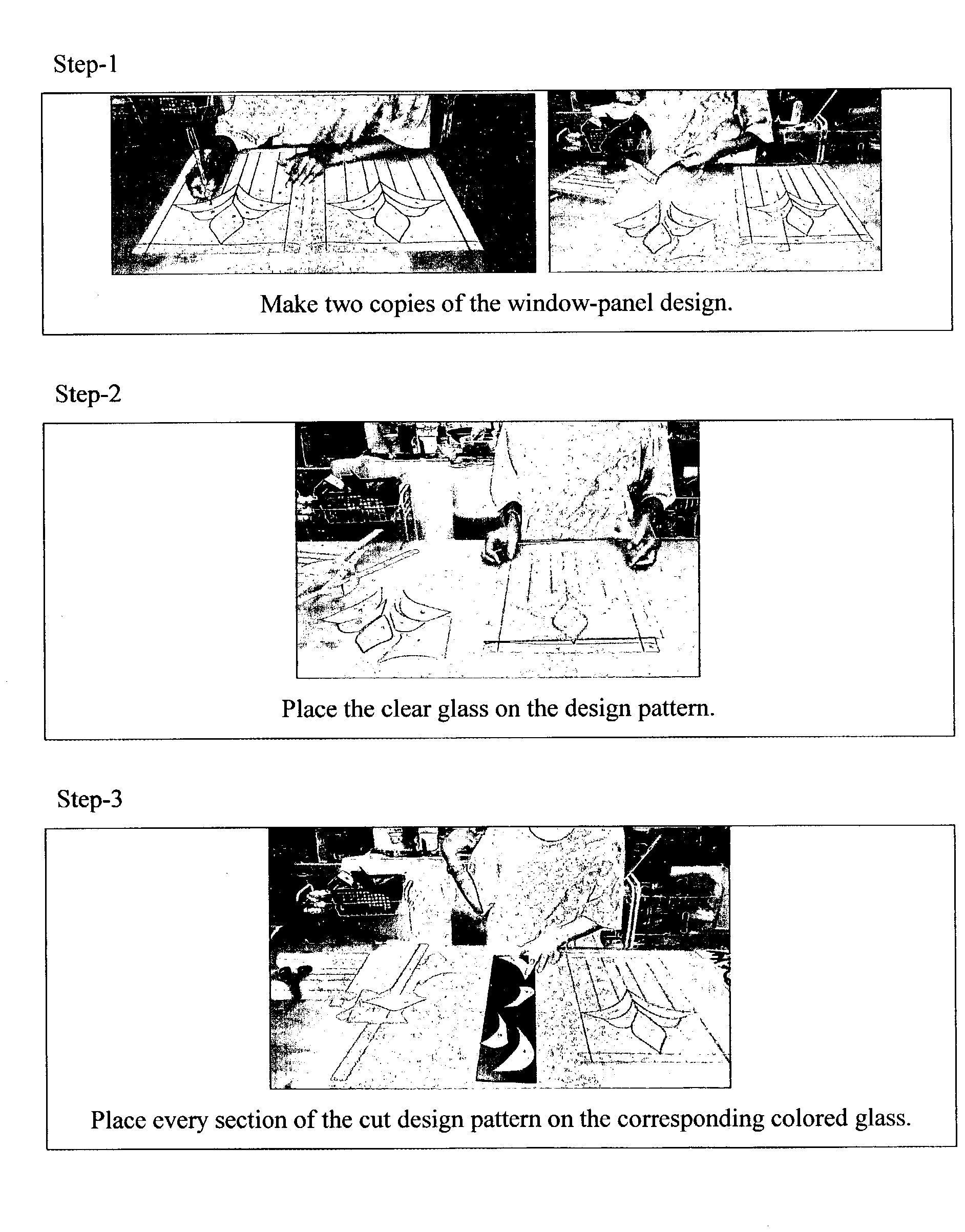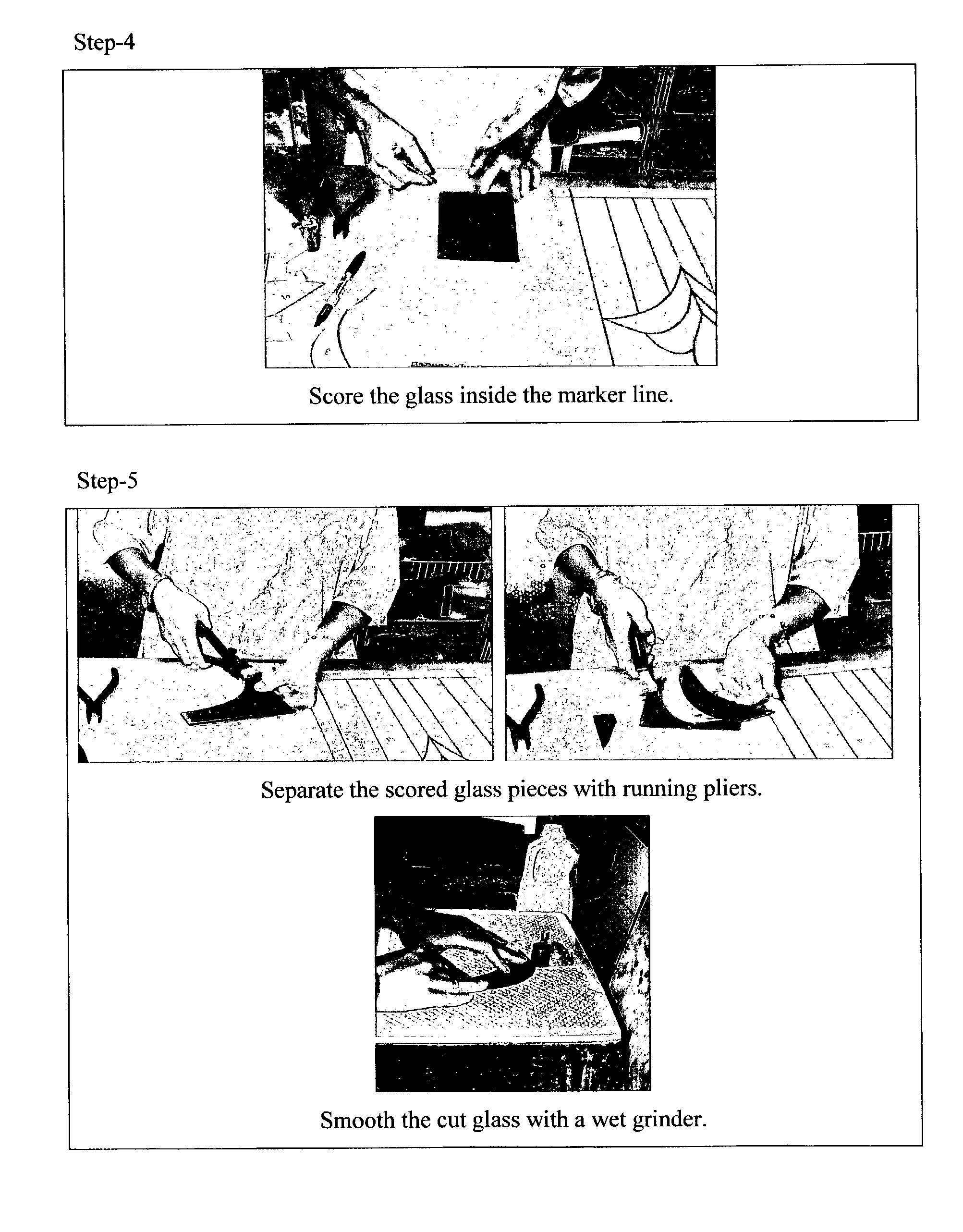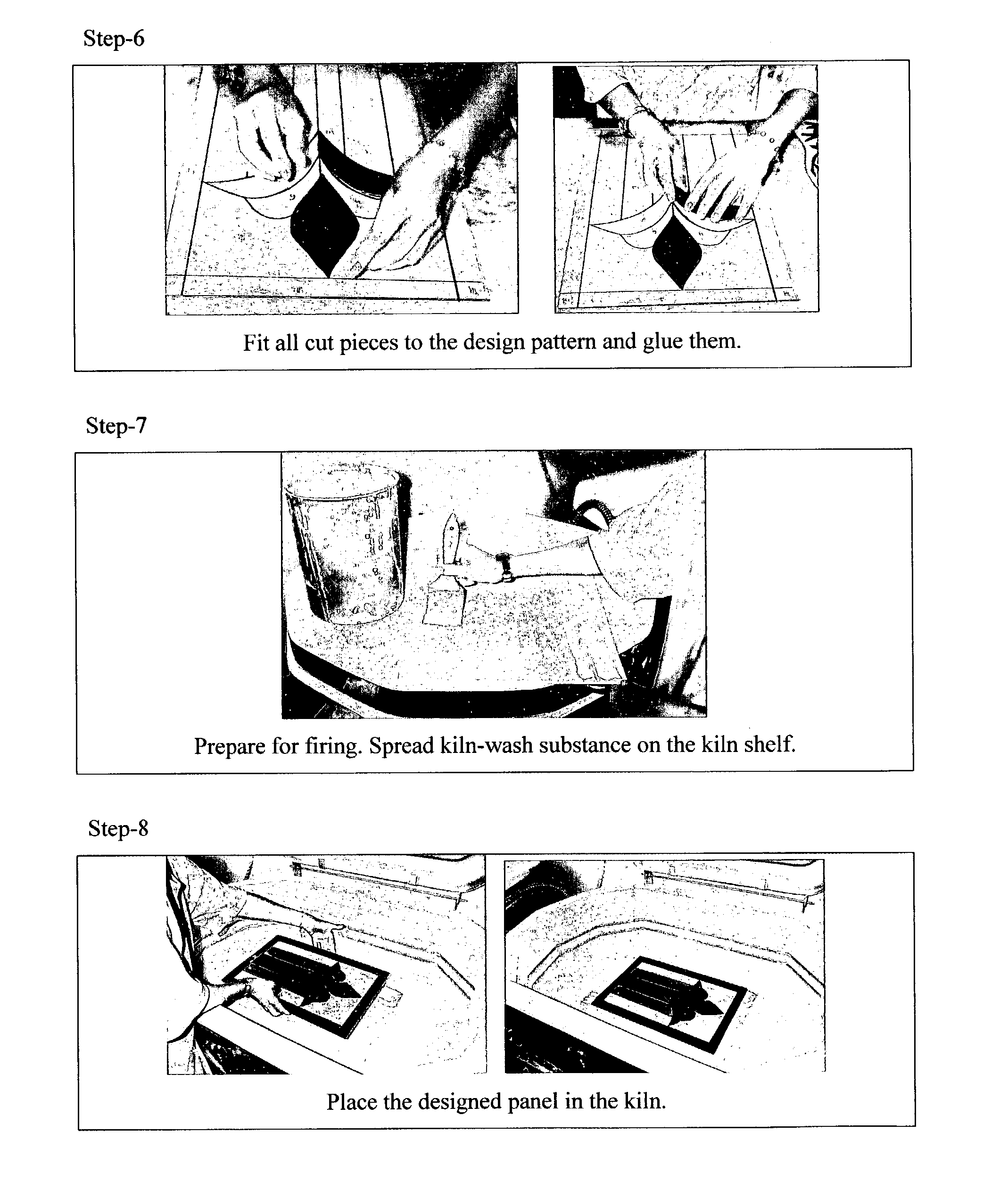Stained glass - the fusing way
a technology of stained glass and fusion, applied in the field of stained glass, can solve the problems of increasing complexity and unhealthy nature, and achieve the effect of increasing the overall light transmission per square inch and more light reflection
- Summary
- Abstract
- Description
- Claims
- Application Information
AI Technical Summary
Benefits of technology
Problems solved by technology
Method used
Image
Examples
Embodiment Construction
[0023] Introduction: "Stained Glass--The Fusing Way" is created, developed and produced via the following steps.
[0024] We reserve the right to modify and further supplement this patent application as necessary. We also reserve the right to amend this patent application.
[0025] Step-1
[0026] Make two copies of your window-panel design pattern ("design pattern") on paper. Number each section on the design pattern. One design pattern will be scissor cut on the marker line to be used for the glass cutting correspondingly. The second design pattern will be used as a layout guide for assembling the designed panel.
[0027] Step-2
[0028] Cut 1 / 8" thick piece of clear glass compatible with the colored glass selected for the designed panel. The clear piece of glass has to be cut to the final dimension of your designed panel (compatibility characteristics allows multiple pieces of glass to be fused together and after proper cooling to room temperature leave no undue stresses that will lead to fract...
PUM
| Property | Measurement | Unit |
|---|---|---|
| temperature | aaaaa | aaaaa |
| stress | aaaaa | aaaaa |
| size | aaaaa | aaaaa |
Abstract
Description
Claims
Application Information
 Login to View More
Login to View More - R&D
- Intellectual Property
- Life Sciences
- Materials
- Tech Scout
- Unparalleled Data Quality
- Higher Quality Content
- 60% Fewer Hallucinations
Browse by: Latest US Patents, China's latest patents, Technical Efficacy Thesaurus, Application Domain, Technology Topic, Popular Technical Reports.
© 2025 PatSnap. All rights reserved.Legal|Privacy policy|Modern Slavery Act Transparency Statement|Sitemap|About US| Contact US: help@patsnap.com



